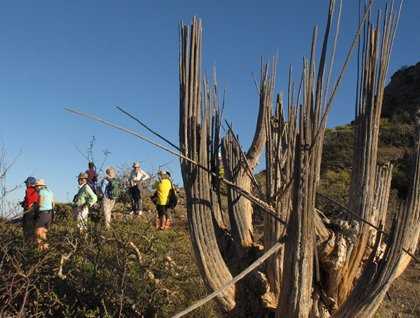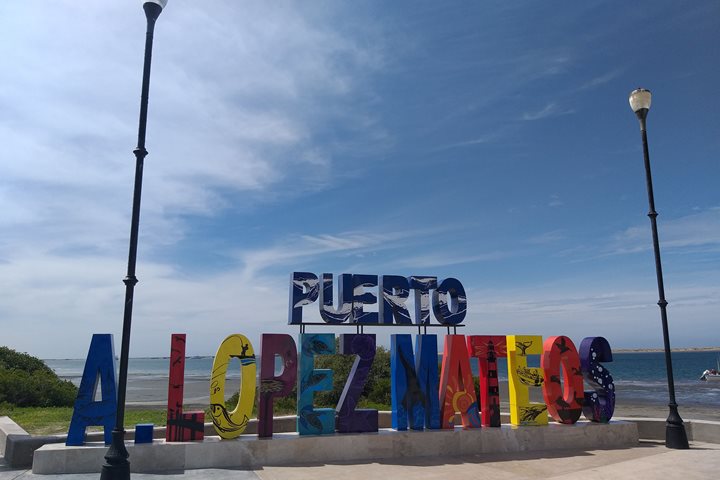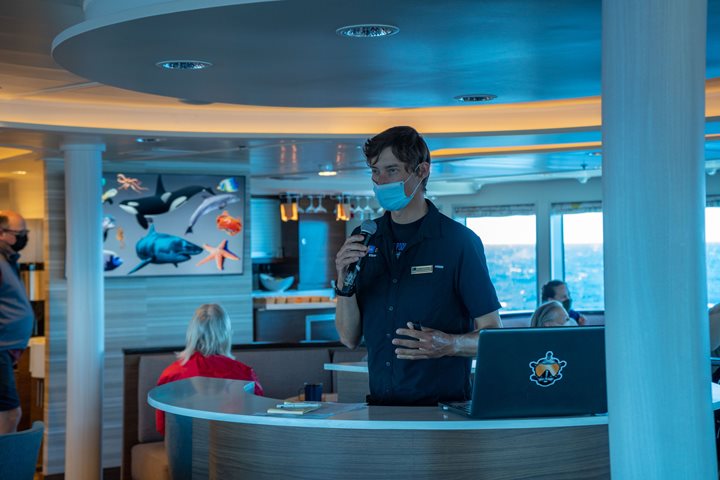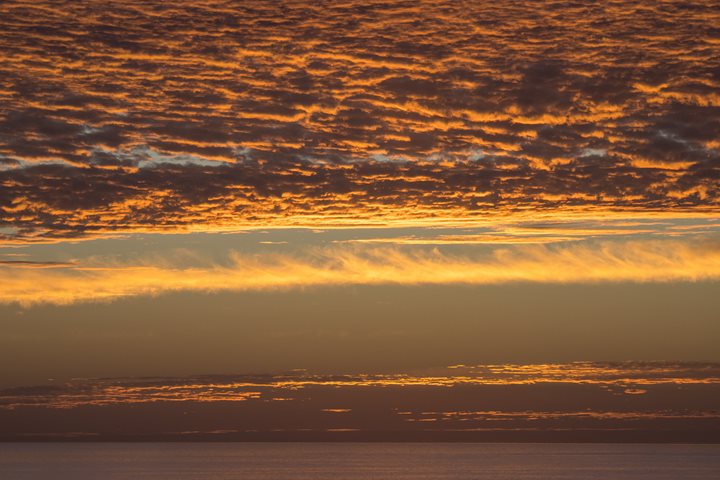This week we are exploring the Gulf of California and our voyage is called “Among the Great Whales.” The waters of the gulf are known for a magnificent diversity of marine mammals that migrate through or call the gulf home. How could you find anything in this great expanse of water? Well, an exhalation that becomes a tower of mist approximately 30 feet tall makes a great light bulb to grab your attention. The ephemeral geyser of mist created by the whale pretty much gave its presence away.
When you open a reference book on marine mammals, the largest animal to be found is the blue whale. What a perfect place to start our observations of cetaceans this week, at the top of the list. A magnificent blue whale swam languidly, breathed several times at the surface and then dove for about 12 minutes at a time. We could follow the turquoise outline of the whale as it swam near the surface. Large lily pads of calm slick water indicated a stroke of the massive flukes and the subsequent upwelling of displaced water.
We departed company with the whale after an exhilaratingly close surfacing where we not only experienced a great view, but heard the explosive exhalation before the nearly imperceptible inhalation and subsequent dive.
As we approached our anchorage, a pod of bottlenose dolphins circled the ship. Animals dove, leapt, and slapped their tails on the waters’ surface. Small tuna were later seen creating small rooster tails, evidence that a frenzy of feeding was still in progress. Snorkelers soon jumped into the water from an anchored boat. They experience a different kind of frenzy, one of a multiplicity of colorful fish swimming about the rocky fringes of the island.
Exploration of terra firma was also an option for the afternoon. Some guests chose to explore the winding arroyo up and across the island for a look over the north-facing cliff. Others chose more of a meandering walk through the cardon forest. While the island is home to the endemic giant barrel, a more diminutive endemic species stole the show, the Isla Santa Catalina rattleless rattlesnake. In possession of only one button on its tail, this snake cannot create the adrenaline inducing “buzz” associated with other rattlesnakes. From a safe distance we took its picture and continued our investigations of the island and its denizens.
With the soft glow of sunset illuminating the western sky we returned to the National Geographic Sea Bird and recapped our highlights of the day, starting with the biggest animal ever to inhabit our planet, the blue whale.





.jpg?width=106&height=85&mode=crop&scale=both&quality=50)



